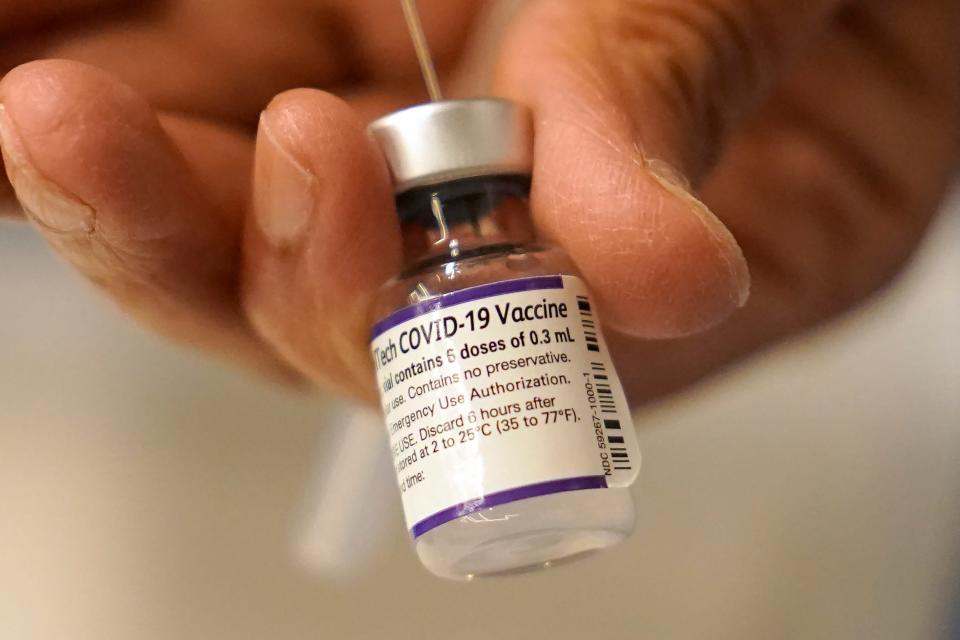Amarillo hospitals seeing concerning rise in respiratory patients
- Oops!Something went wrong.Please try again later.
With respiratory illnesses on an alarming rise in Amarillo, health leaders across the city gathered last week to discuss the impact on local hospitals. Respiratory illnesses most prominent include the flu, COVID-19 and respiratory syncytial virus (RSV).
According to the Centers for Disease Control and Prevention (CDC), 44 states have reported high or very high flu activity over the past week. Estimates from the CDC have at least 78,000 hospitalizations and 4,5000 deaths from the flu this flu season.

On hand for the call were the chief medical officers for Northwest Texas Healthcare System (NTHS), BSA Hospital and Dr. Rodney Gonzalez, head of VA health care in Amarillo. Also on hand were Dr. Todd Bell, Amarillo’s public health authority and Casie Stoughton, director of public health.
The number of patients being seen in the city’s emergency rooms was of great concern during the call, which greatly impacts the effectiveness of staffing at these hospitals.
Dr. Brian Weiss, the chief medical officer for (NTHS), spoke about the impact on his hospital staff.

“What we are seeing over the last couple of days is that these emergency rooms are seeing over 200% of the number of patients that they were originally designed to see,” said Dr. Brian Weis at NWTH. “That is very concerning because first, it overloads our staff at these hospitals, but second, when you’re hitting 200% of our capacity, you actually physically overload the building.”
Weiss said the surge in people coming to the emergency room is also causing more hospital staff to have to miss days due to coming in close proximity to so many people suffering from respiratory illnesses.
Dr. Michael Lamanteer said his hospital was getting high numbers of admissions in the emergency room, stating that he had 18 holds in the ER as of Wednesday morning.
“This is a very high number and it is not normal for us at the hospital to have that many patients waiting for admission beds because of the demand of inpatient need,” Lamanteer said.
Asked if the accusation from some in the public that says that this influenza rise is due to it being diagnosed as COVID-19 during the previous years of the pandemic, Dr. Bell weighed in that mitigation factors that were implemented for COVID-19 greatly decreased the impact of the flu. He said these measures were a great factor in flu cases being down during the pandemic due to people not being in the same social interactions.
“Flu just never got a critical mass over the past two years,” Bell said. “Now, there are lots of easy targets for flu to hit this year. This year we have a lot of folks that maybe not have got their flu shot because it has not been in the news as much. What we have seen with this is that the flu has come back with a vengeance this year. When people were wearing masks, there was less flu.”
Bell said people are more confident going to work or in public sick with less masking and precautions. He said that masking will still be effective, especially for those who are sick, not to reduce the spreading of viral infections.
Bell also addressed the taxing of staff of the local hospitals.
“The strain on the healthcare system is when we have folks with a mild or moderate disease that are seeking care like at emergency rooms and places that are really designed for higher acuity for more sick patients, patients with chest pain or strokes,” Bell said. “We need to make sure that we have open access for these folks with severe illness, that they can get in and see their physician in those emergency settings in a rapid manner.”
According to the health leadership, about 35% of tests are coming back positive for influenza and its pediatric beds are staying at close to max capacity over the past two weeks.
Casie Stoughton spoke of preventative measures such as staying home while sick and taking basic precautions such as washing hands and staying out of close contact with others. She also encouraged people to get their yearly flu vaccine and COVID-19 immunizations to prevent more extreme outcomes from these viruses
This article originally appeared on Amarillo Globe-News: Amarillo hospitals seeing concerning rise in respiratory patients

